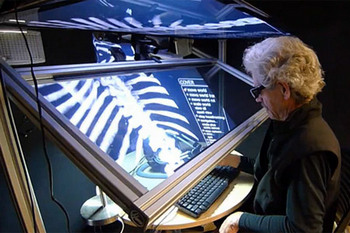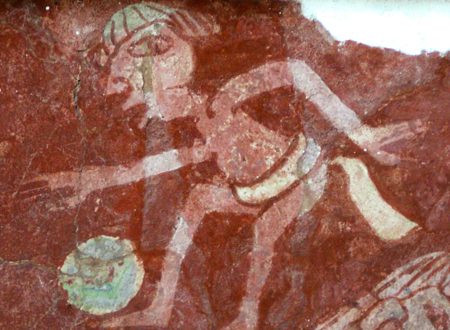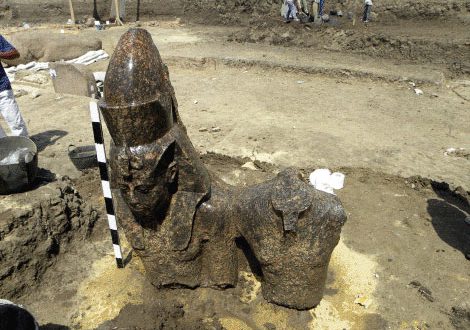 tzi has not been put on ice, on the contrary – things are hotting up for him! By decoding tzi the Iceman’s DNA, scientists have reached a new milestone in their study of the world’s mostfamous glacier mummy.
tzi has not been put on ice, on the contrary – things are hotting up for him! By decoding tzi the Iceman’s DNA, scientists have reached a new milestone in their study of the world’s mostfamous glacier mummy.
Experts from three institutions have pooled their skills in order to map tzis entire genetic make-up: Albert Zink, Head of the EURAC Institute for Mummies and the Iceman, together with Carsten Pusch, from the Institute of Human Genetics at the University of Tbingen and Andreas Keller from the biotech firm febit in Heidelberg. Together the researchers reached a historic moment in the study of the 5,000 year old mummy.
tzi’s genetic profile is based on a defrosted bone sample extracted from the pelvis of the ice mummy. The scientists then used sequencing technology to decode the millions of building blocks which make up tzis genome, creating a DNA library which contains the largest data set ever recovered from the iceman. This work on the iceman turned out to be a ground-breaking activity for the research team. We are dealing here with old DNA which in addition is heavily fragmented, explains Albert Zink, who is entrusted with the care of tzi.
When a body was found on the Austro-Italian border in 1991, 3210 metres above sea level,it was at first assumed to be a modern corpse. Only afterthe bodywas removed from the ice, radiocarbon dating onthe upper thigh bone revealed the corpse’sto be that of a LateNeolithicmountaineer.tzi, as the 5300-year-old glacier corpse was soon nicknamed was found fully clothed and with his hair, eyes and even content of his intestines still intact.Although the mummy weights only 13 kilograms, theChalcolithic iceman must have weighed about 50, and is estimated to have been 1.60 metres tall. He wore his dark brown hair loose at shoulder lenght, and had dots and lines tattood on his lower spine, behind his left knee and on his right ankle, likely inteded as a cure for arthritis. Amongst others, the iceman carried a copper axe, a flint knife, arrows and an unfinished bow.
We knowtheIceman was not in good health when he died, but thecause and exact circumstances of tzi’s death in early summer and around the age of 46 are still debated. At first it was thought he was surprised by a winter storm, or ritually sacrificed. Only in 2001, the discovery of an arrowhead lodged in tzi’s shoulder prompted speculation that he died a violent death.Further research revealed bruises and cuts, as well as evidence the Tyrolean Iceman received a blow to the head. It is unlikely tzi was alone at the time of his death.
In 2000, scientists defrosted the natural mummy for the first time and sampled DNA from his intestines. The study of tzi’s mitochondrial DNA showed he belongs to subhaplogroup K1, meaning he shares an a common ancestor with at least 8% of modern Europeans. Further research found that surprisingly he belongs to a branch of that genetic group that is thought to beextinct, or at leastextremelyrare.
 Albert Zink and Andreas Keller recently published (in collaboration with the Egyptian team led by Zahi Hawass) the latest findings on the life and the medical condition of Tutankhamen and his family. They hope to do the same for tzi and are studying tzi’s genetic profile, looking for answers to the many questions surrounding the iceman and human evolution. Which genetic mutations can be observed between earlier and present day populations? Are any of tzis descendants still around today and if so, where might they be found?
Albert Zink and Andreas Keller recently published (in collaboration with the Egyptian team led by Zahi Hawass) the latest findings on the life and the medical condition of Tutankhamen and his family. They hope to do the same for tzi and are studying tzi’s genetic profile, looking for answers to the many questions surrounding the iceman and human evolution. Which genetic mutations can be observed between earlier and present day populations? Are any of tzis descendants still around today and if so, where might they be found?
The researchers say that by comparing the iceman’s genetic make-up and predisposition to various types of ailments, tzi can teach us about todays genetic diseases and other illnesses (such as diabetes or cancer) as well.
They promise to publish their data analysis as well as the resulting conclusions by next year, in time to celebrate the 20th anniversary of tzi’s discovery.
Since 1998, the Tyrolean Iceman and the artefacts found with him areon display at the South Tyrol Museum of Archaeology, Italy. The mummy is kept in a special refrigeration chamber, at the constant temperature of 6 C.





